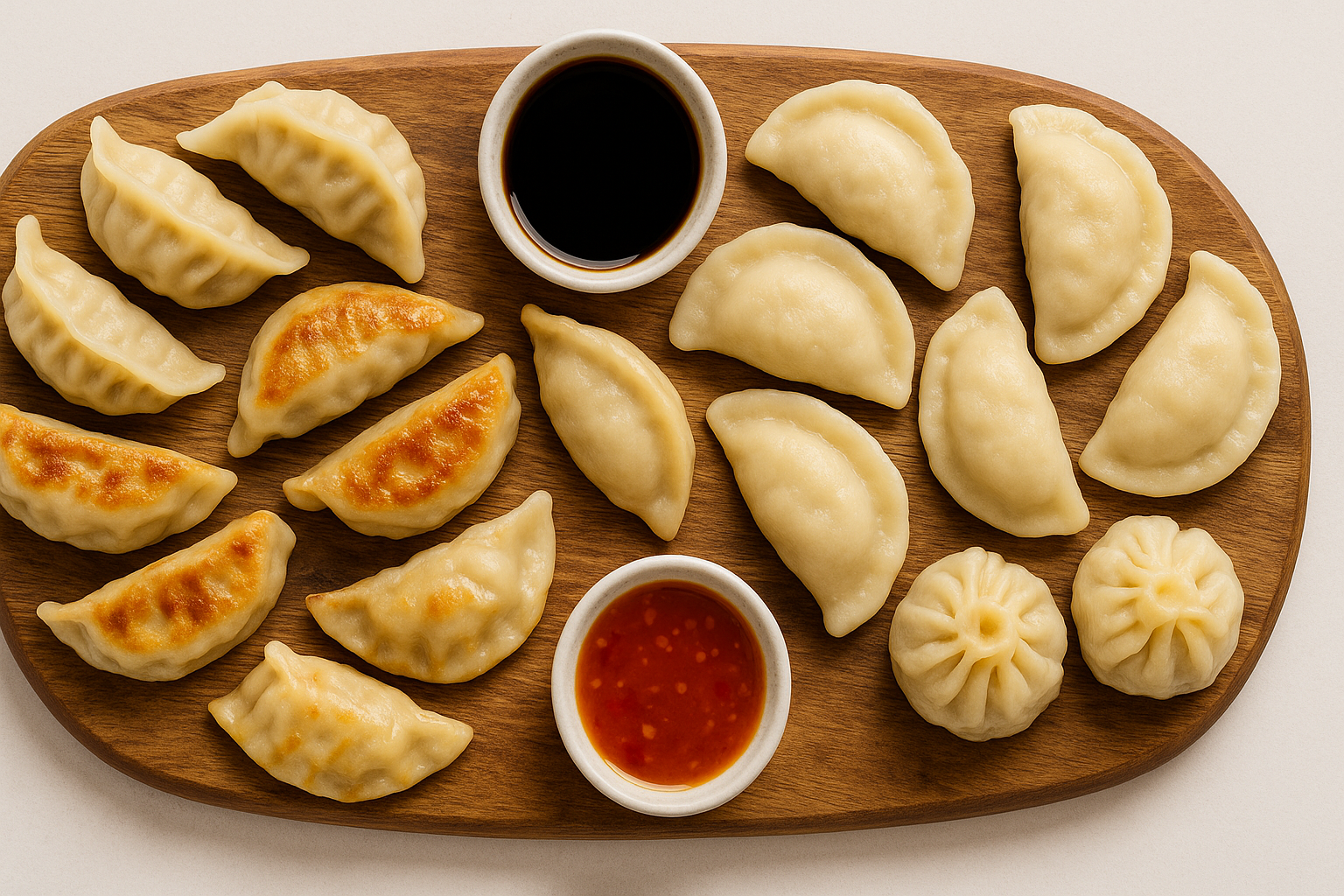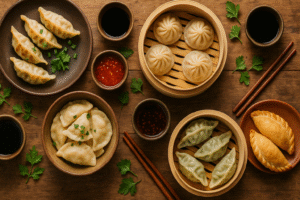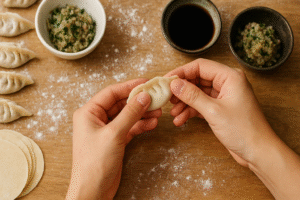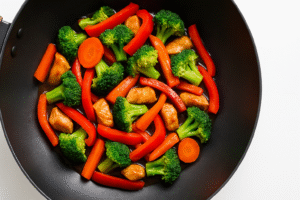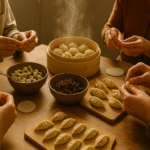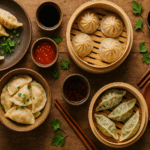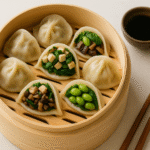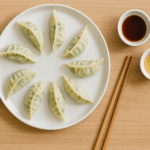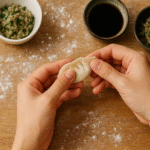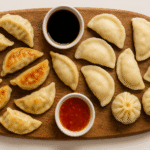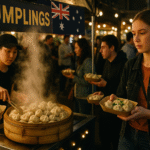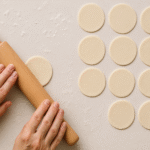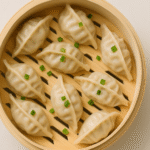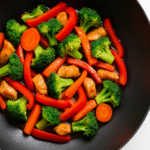Dumplings are one of the few foods that truly unite the world. Nearly every culture has developed its own version — dough wrapped around something delicious, served steamed, fried, or boiled. From Chinese jiaozi to Polish pierogi, dumplings represent comfort, culture, and creativity.
This guide explores the origins and variations of dumplings around the globe, how they’re made, and what makes each style unique.
A Short History of Dumplings
The origin of dumplings can be traced back over 1,800 years to China, where a physician named Zhang Zhongjing is said to have invented them to keep people warm and nourished during cold winters. Since then, dumplings have evolved into countless forms across Asia, Europe, and beyond.
Despite the differences in fillings, wrappers, and cooking methods, one thing remains constant: dumplings bring people together.
Dumpling Styles Around the World
Chinese Dumplings (Jiaozi, Bao, and Wonton)
Chinese dumplings are among the most recognized in the world. With thin wheat wrappers and endless filling possibilities, they are a symbol of prosperity during the Lunar New Year.
Common fillings include pork and cabbage, shrimp and chive, or tofu and mushroom for vegetarian versions. Depending on the region, they can be boiled, steamed, or pan-fried, then served with soy sauce, black vinegar, and chili oil.
Japanese Gyoza
Gyoza were inspired by Chinese jiaozi but have developed their own identity. They feature thinner wrappers, finely minced fillings, and a distinct crispy base achieved by pan-frying before steaming.
Typically filled with pork, garlic, and chives, gyoza are served with soy or ponzu dipping sauces. They are lighter and more delicate than most dumplings, reflecting Japanese precision and balance.
Korean Mandu
Korean mandu are versatile and heartier. They can be steamed, boiled, or deep-fried, depending on the season and occasion. Fillings often include beef, tofu, kimchi, and glass noodles, giving them a rich umami flavor.
Mandu are traditionally prepared during Seollal, the Korean Lunar New Year, symbolizing good luck and fortune for the year ahead.
Polish Pierogi
Pierogi are a cornerstone of Eastern European comfort food. These soft, doughy dumplings are usually boiled and then lightly pan-fried in butter for extra flavor.
Fillings vary from savory options like potato and cheese or sauerkraut to sweet versions filled with fruit. They’re typically served with sour cream, caramelized onions, or melted butter.
Mongolian Khuushuur and Buuz
In Mongolia, dumplings come in two traditional styles: buuz (steamed) and khuushuur (deep-fried). Both feature a thick wheat wrapper filled with mutton or beef, seasoned simply with salt and onion.
These dumplings are staples during Mongolian festivals and are often eaten with salted milk tea, offering hearty nourishment in the harsh climate of the steppe.
Australian Dim Sim
Australia’s contribution to the dumpling world, the dim sim, was inspired by Cantonese dim sum but evolved into something uniquely local. With thick wrappers, minced meat fillings, and a larger size, dim sims are often steamed or deep-fried and served with soy or chili sauce.
They are a staple of Australian street food culture, especially in Melbourne, where they first gained popularity.
Comparative Table: Dumplings Around the World
| Style / Region | Wrapper Type | Cooking Method | Typical Filling | Dipping Sauce |
|---|---|---|---|---|
| Jiaozi (China) | Wheat dough | Boil, steam, pan-fry | Pork, cabbage, tofu | Soy, vinegar, chili oil |
| Gyoza (Japan) | Thin wheat | Pan-fry + steam | Pork, garlic, chive | Soy, ponzu |
| Mandu (Korea) | Wheat | Boil, steam, fry | Beef, kimchi, tofu | Soy, sesame oil |
| Pierogi (Poland) | Soft dough | Boil, pan-fry | Potato, cheese, fruit | Sour cream, butter |
| Khuushuur (Mongolia) | Thick wheat | Deep-fry | Mutton, beef | No sauce |
| Dim Sim (Australia) | Thick wrapper | Steam, fry | Meat, cabbage | Soy, chili sauce |
How to Make Global Dumplings at Home
- Start Simple: Use pre-made wrappers to save time while learning.
- Experiment with Fillings: Try chicken with herbs, tofu with spinach, or seafood with ginger.
- Perfect the Fold: Practice classic crescent or pleated folds for secure sealing.
- Adjust Cooking Techniques: Steam for lightness, pan-fry for crispness, or deep-fry for indulgence.
- Create Fusion Variants:
- Thai green curry chicken dumplings
- Aussie BBQ beef dumplings
- Veggie rainbow dumplings using beetroot and spinach dough
The Cultural Meaning of Dumplings
Across cultures, dumplings represent connection, prosperity, and care. In China, families gather to fold dumplings together during festivals. In Poland, pierogi-making is a social ritual before holidays.
The act of wrapping food in dough transcends geography — it’s about community, love, and nourishment shared through generations.
FAQs
“Dumpling” is a broad term. Gyoza are the Japanese version of Chinese jiaozi, and potstickers specifically refer to pan-fried dumplings with a crispy bottom.
Yes. Place them on a tray without touching until frozen, then store in a sealed bag. Steam or boil directly from frozen without thawing.
Steaming is the healthiest method as it requires no oil. Pan-frying adds flavor but increases fat content.
Yes. Fillings such as mushrooms, tofu, cabbage, and garlic provide deep umami flavor even without meat.
Line the base with parchment paper or a light coating of oil to keep them from sticking.
Conclusion
Dumplings are a culinary language spoken across continents. From the snowy peaks of Mongolia to the street markets of Melbourne, every culture has found a way to fold joy, warmth, and identity into small parcels of dough.
No matter where they come from, dumplings tell the same story — one of comfort, family, and tradition.
